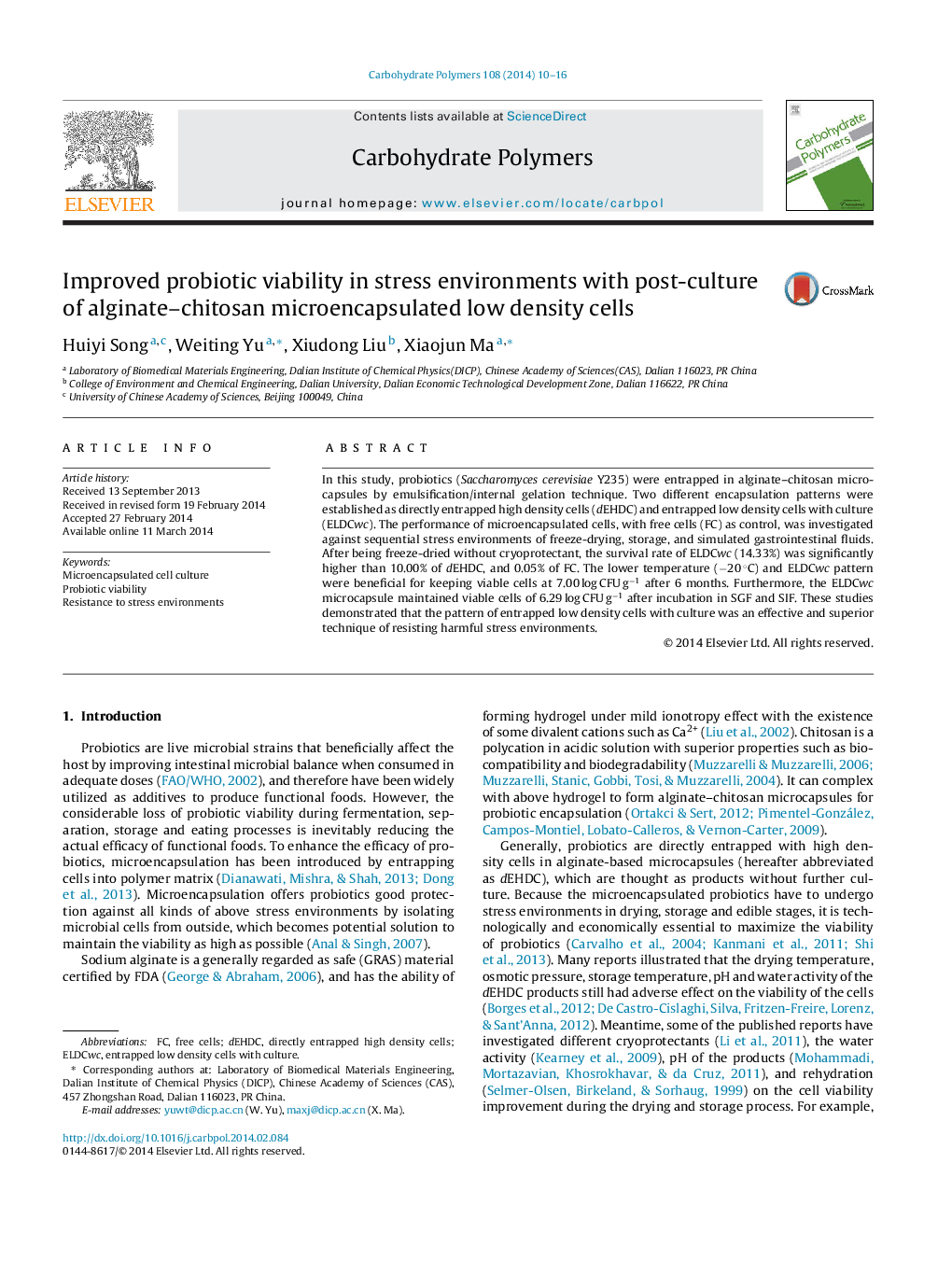| Article ID | Journal | Published Year | Pages | File Type |
|---|---|---|---|---|
| 1375489 | Carbohydrate Polymers | 2014 | 7 Pages |
•Microencapsulated probiotics had higher viability in stress environments.•Microencapsulated low density cells with culture were established as new technique.•Cell culture improved stress resistance of microencapsulated low density cells.
In this study, probiotics (Saccharomyces cerevisiae Y235) were entrapped in alginate–chitosan microcapsules by emulsification/internal gelation technique. Two different encapsulation patterns were established as directly entrapped high density cells (dEHDC) and entrapped low density cells with culture (ELDCwc). The performance of microencapsulated cells, with free cells (FC) as control, was investigated against sequential stress environments of freeze-drying, storage, and simulated gastrointestinal fluids. After being freeze-dried without cryoprotectant, the survival rate of ELDCwc (14.33%) was significantly higher than 10.00% of dEHDC, and 0.05% of FC. The lower temperature (−20 °C) and ELDCwc pattern were beneficial for keeping viable cells at 7.00 log CFU g−1 after 6 months. Furthermore, the ELDCwc microcapsule maintained viable cells of 6.29 log CFU g−1 after incubation in SGF and SIF. These studies demonstrated that the pattern of entrapped low density cells with culture was an effective and superior technique of resisting harmful stress environments.
